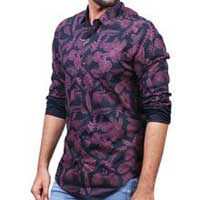"For Bangladesh RMG exports, shirting has been a key growth driver over the years. This was complemented aptly by knits and bottoms (non-denim and denim) that helped the country strengthen its position as the preferred global textile sourcing destination. Looking at the increased efficiency and expertise, major MNCs such as H&M, US retail giant Walmart, British retailer Primark, Germany’s posh brands Hugo Boss and Olymp (formal shirts), and many more, have made Bangladesh their preferred sourcing destination."

For Bangladesh RMG exports, shirting has been a key growth driver over the years. This was complemented aptly by knits and bottoms (non-denim and denim) that helped the country strengthen its position as the preferred global textile sourcing destination. Looking at the increased efficiency and expertise, major MNCs such as H&M, US retail giant Walmart, British retailer Primark, Germany’s posh brands Hugo Boss and Olymp (formal shirts), and many more, have made Bangladesh their preferred sourcing destination.
Statista’s data reveals, the global shirt market stood at $51 billion with total consumption of 2.5 billion pieces in 2016. This is further expected to reach $58.5 billion (in value terms) and 2.83 billion pieces (in volume terms) by 2020. Bangladesh has a key role to play in this growth. The country contributed around 10 per cent to the total global shirt import in 2016. But despite this growth, shirt as a category has somehow failed to keep pace with growth of other products. As Khondoker Mahibur Rahman, MD, Stanley Fashion explains that of late they are getting more demand for sweaters, jackets, denim and other products which found base in Bangladesh after shirts.

Shirts losing ground Even the recent BGMEA data reflects the industry sentiments. In 1996-97, the export earnings from shirts was $759.57 million, while for trousers, jackets, t-shirts and sweaters, the value of exports were $230.98 million, $230.98 million, $391.21 million and $196.6 million, respectively. In 2015-16, in terms of value (export), shirt stood at $2,317.09 million while trousers, jackets, t-shirts and sweaters registered drastic growth to touch $6,319.00 million, $3,774.08 million, $6,118.53 million and $3,182.47 million, respectively.
The growth of denims is one of the key reasons of falling demand for shirts, say experts. Rahman also says about 75 per cent of demand is for denim today. The way the industry has been investing in denim is unprecedented, no other product has grown like this and today the country has integrated strengths that did not exist about a decade ago, and this has been pushed by buyers who now look at Bangladesh as a major supplier, both in basic and fashion segment. As Md Khosru Chowdhury, Chairman & MD, NIPA Group, points out in shirts, which was once the company’s biggest category, casual denim shirts are witnessing greater traction. Moreover, there is no real focus on the category as there are many players in the segment and the price offered is competitive.
A ray of hope
Statista predicts, if global demand for shirts stands at $53.36 billion (in terms of value) and 2,580 million pieces (in terms of volume) in 2017, the same would register a steady increase in coming years to touch $55.17 billion (in value terms) and 2,657 million pieces (in volume terms) by 2018, to further increase to $56.8 billion and 2,740 million pieces respectively by 2019. While challenges exist, there are still some players who are going strong. According to Maashed R Abdullah, Ddirector, Dressmen, the business is more difficult these days as customers are not realising how much effort is put into manufacturing quality products. Prices have dropped significantly but customer’s demands are increasing one needs to find a middle ground where customer and the manufacturer stand to gain.
Many feel shirt business is not at its best today. Compared with other RMG products, shirt is not in the frontline of Bangladesh exports any more. The fact is the country has failed to explore markets for shirts. To grow in shirts, they would have to find new customers and markets. Additionally the price from buyer must be increased; otherwise it would be difficult to survive. There is 50:50 demand for both casual and formal shirts. Men’s formal and casual shirts, ladies blouses, school shirts are items that are seeing greater demand.












